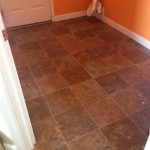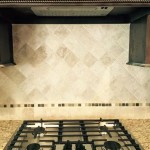What to Put Under Self-Adhesive Vinyl Tiles for a Perfect Installation
Self-adhesive vinyl tiles are a popular choice for DIY flooring projects due to their ease of installation and affordable price. However, for a successful and durable installation, it's crucial to understand what to put under self-adhesive vinyl tiles to ensure a smooth, even surface that will last for years to come.
1. Level and Smooth Subfloor
The most important aspect of preparing your subfloor for self-adhesive vinyl tiles is to ensure it is level and smooth. Any unevenness or irregularities will transfer through the tiles, creating an unsightly and potentially hazardous surface. Use a level to check the floor and make any necessary adjustments using self-leveling compound or a floor leveling kit.
2. Moisture Barrier
If you're installing self-adhesive vinyl tiles in a moisture-prone area, such as a bathroom or basement, it's essential to install a moisture barrier. This will prevent moisture from seeping through the subfloor and damaging the tiles or adhesive. Use a moisture-resistant underlayment or a plastic sheeting barrier that overlaps at seams and walls.
3. Underlayment
An underlayment provides additional cushioning, sound insulation, and moisture protection. It also helps to level out minor imperfections in the subfloor. Choose an underlayment that is compatible with self-adhesive vinyl tiles, such as cork, rubber, or foam underlayment.
4. Primer
A primer can help to improve the adhesion of self-adhesive vinyl tiles to the subfloor. It creates a bonding surface that enhances the strength and durability of the installation. Primer is especially recommended for porous subfloors, such as concrete or wood.
5. Radiant Heat Systems
If you plan to install self-adhesive vinyl tiles over a radiant heat system, it's important to use an underlayment that is approved for radiant heat. These underlayments are designed to withstand the heat and prevent damage to the tiles.
6. Tile Backer Board
In certain cases, such as when installing self-adhesive vinyl tiles over an uneven or damaged subfloor, a tile backer board can be used. Tile backer board provides a smooth, stable surface for the tiles to adhere to and helps to distribute the weight evenly.
Additional Tips
- Allow the self-adhesive vinyl tiles to acclimate to the room temperature before installation.
- Remove any dirt, dust, or debris from the subfloor before applying the tiles.
- Use a straight edge and a utility knife to cut the tiles cleanly.
- Roll the tiles firmly to ensure a strong bond with the subfloor.
- Allow the adhesive to cure for the recommended time before walking on or using the floor.
By following these steps and using the appropriate materials, you can ensure a successful installation of self-adhesive vinyl tiles that will provide years of beauty and durability.

Suitable Subfloors For Self Adhesive Vinyl Floor Tiles Planks Best Surface To Install L Stick

Simple Inexpensive Self Adhesive Floor Tiles One Year Later

How To Install Vinyl Floor Tiles Homebase

Putting Down Self Adhesive Vinyl Floor Tiles Flooring Supplies

How To Fix Loose Or Curling Self Adhesive Vinyl Floor Tiles L And Stick Pvc

How To Lay Self Adhesive Vinyl Tiles Working On Flooring

Suitable Subfloors For Self Adhesive Vinyl Floor Tiles Planks Best Surface To Install L Stick

D C Fix Stencil Motif Grey L Stick Self Adhesive Rigid Vinyl Floor Tiles 30 5 Cm X Freemans

Grey White Tile Stone Effect Self Adhesive Vinyl Pack Of 13 Tradepoint

Concrete Texture Self Adhesive Vinyl Tiles Gray Floor White For Bathroom Stone Luxury Tile
Related Posts








